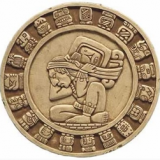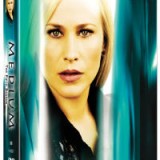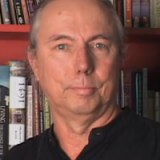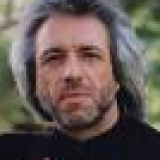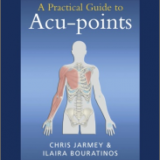Pranic Therapy – Part 3: Qi or Ki Life Force Energy, Vedic Scriptures, Yogic and Tantric Models
By G. Kumar
The Universal Stream of Consciousness known as Qi (pronounced Chee) in Chinese and Ki in Japanese is known as the Cosmic Prana in Sanskrit. Healing using this Life-force Energy is called Pranic Therapy.
There are two types of seekers in the Path Celestial, those who aspire for liberation and ordinary mundane seekers.
Liberation is defined as a yearning for Eternal Life and the first group has an intense yearning for the Life Divine. Conferred with changeless faith and indomitable will, they keep up relentless struggle and get glimpses of Transcendental Consciousness. They have the Goal of Self-Actualization fixed in their minds and mental problems and physical ailments do not deter them.
“But My mahatmas, those of noble souls, Who tread the Path Celestial, worship Me Unendingly they keep their yearning for Me!”
–The Song Celestial
All the great mystics of all civilizations belonged to this group.
“He still adheres to the high and difficult road That sole leads to Eternity’s peaks!”
But this group, unfortunately is a minority.
The majority of spiritual seekers belong to the second group. These people have true aspiration but it is either not intense enough or is not supported by a strong will to undergo prolonged inner struggles or to bear the resultant physical or mental reactions. Many of them do not have any hope of realising the Self in this life, and so they are unwilling to sacrifice health or peace of mind for such an elusive and distant goal. The outer instruments for mortal man are not fit to endure the severe rigours of this spiritual journey or face its subtle and formidable dangers. Self Actualisation can only come from immense Grace Divine.
Ordinary mundane people find it difficult to make spiritual progress. It is not their sole concern in life although they may have committed themselves to it in a general way. For them, an integral scheme of life in which the considerations of health and secular values receive as much attention as spiritual orientation is what is needed. This present article is meant for such seekers.
The Self as the basis of all Love
Why do we collect wealth ? For whose sake is wealth loved? It is for the sake of the Self. Why do we love our wife and children? For whose sake is the wife and children loved? It is for the sake of the Self. Everything in the universe – husband, wife, children, everything – is loved for the sake of oneself. The Self, when known, everything is known. What do we mean by oneself here? Vedanta speaks of two selves in man – a lower self and a higher Self. The lower self, regarded as the false self, is the sum total of one’s instincts, drives and impulses. The higher Self refers to the pure Atman which is regarded as the true nature of man. Vedanta states that the lower self, if left uncontrolled, will act as one’s own enemy, and, if purified and controlled, will act as one’s own friend. When the lower self is purified by yogic techniques and attuned to the higher Self, self-hate disappears and love for the higher Self dawns.
“He sees indeed who sees in all alike, The living lordly Self, Self supreme Imperishable amidst the perishing”
–The Song Celestial
When this divine love blossoms in one’s bosom, one’s attitude towards his body changes. He now begins to love his body as an instrument for the manifestation of the Divine Self. Vedic Scriptures speak of the body as “the temple of the His great transparent mirror, Self”. As a matter of fact, Vedic temples are modelled after the pattern of the human organism.
Symbolism behind Vedic temples
Man has three bodies – physical, astral & causal. The outer wall of the Vedic temple represents the physical body of man. The inner wall represents the astral body and the innermost wall represents the Causal body. Deep within these three bodies is the Self, the Atman who is represented by the Deity! The word temple is derived from the Latin word tempulum, a place where Law and Justice can be administered. The principle behind the temple, is Know Thyself!
“Am I a god, then? Yes In these pure features I behold Creative Nature to soul unfold”
–Goethe
The body is given prime importance in Vedic ritualistic worship known as Puja. Apart from ritualistic worship, service is divine and regarded as a form of worship known as Yajna. Vedic Scriptures enjoin five types of service known as Pancha-Mahayajna; service to the gods, service to sages, service to manes (“Manes” means the deified souls of dead ancestors), service to human beings, service to animals. The ancient Law-giver Manu has given the injunction to divinize the body through these five practices. (“Through the repeated practice of these five great yajnas, the human body gets divinized”.)
“The human body is the greatest instrument for Self- Actualisation”, said the famous Sanskrit poet Kalidasa. Maintaining the divine status of the body is not easy.It should be kept as clean and healthy and we should not allow any kind of physical or mental indulgence to defile its sanctity and harmony. (“Chastity is the flowering in man” said Thoreau and continence has been prescribed for spiritual progress). That is to say, change in attitude towards the body brings with it a new responsibility for one’s own health. Surprising indeed is the fact that many people think that restoring health and curing diseases are solely the responsibility of the medical profession. In the holistic health system, responsibility for falling ill and getting well both rest primarily with the patient. The doctor only assists the patient in curing himself. As Albert Schweitzer said “All healing is Self-healing”.
Holistic medicine postulates that the responsibility for healthcare rests in the patient’s hands because that is where the knowledge and control of the variables lie (diet,stress,exercise,genetics,emotion and medication).
Knowledge of the Psychosomatic Machine
If the patient is aware of the disease and its aetiology, about his body’s immune power and if he can bear physical pain temporarily, with a stoic calmness, he can avoid a lot of unnecessary medication.
In the Holistic Model, the cause of any disease is understood in terms of the whole person and not in terms of a particular organ or tissue. As Sir William Osler put it, it is more important to know the patient who has the disease than the disease of the patient. Plato remarked that “the treatment of the parts should not be attempted without treatment of the entirety” The one person who knows about the patient more than anybody else is the patient himself.
Compliments should go to Western Science which has discovered a lot of knowledge by research and which is the result of the painstaking labour of thousands of dedicated scientists for more than 200 years. This accumulated treasure is humanity’s precious heritage and only charlatans will ignore or undervalue it. It is imperative that every educated person should have a basic knowledge of human anatomy and physiology, and also of Western psychology. However this research is analytical and incomplete.
A Holistic Model was developed by the Sages of India 2500 years ago.
The Five Levels of Being – The Yogic Model
These are the five concentric sheaths enveloping the Self, the Divine Spark in man!
- Physical Sheath (Annamaya Kosha)
- Vital Sheath (Pranamaya Kosha)
- Mental Sheath (Manomaya Kosha)
- Intellectual Sheath (Vijnanamaya Kosha)
- Bliss Sheath (Anandamaya Kosha)
Disease is the imbalance in any of the three lower sheaths of existence – physical, vital & mental.
The microcosm and the macrocosm are in unbroken communion with each other and are structured on the same pattern. At the level of the physical sheath, food, water and oxygen enter the microcosm and Co2, waste products, etc., return to the macrocosm. This is true of other sheaths also. The individual cannot exist independent of the cosmos. The interdependence of the Microcosm and the Macrocosm is known in Classical Philosophy as the Bio-Cosmic tieup. If the exchange between the physical sheath and the physical world around it is defective, the body will become ill, and death will result if it is stopped altogether.
The Tantric Model
A different but parallel model of human personality was developed by the Tantras. Whereas the Upanishads speak of Five Sheaths or Koshas, the Tantras speak of six chakras. These Chakras are (in ascending order):
- Root Chakra (Muladhara)
- Anal Chakra (Manipura)
- Solar Plexus Chakra (Swadhistana)
- Heart Chakra (Anahata)
- Throat Chakra (Vishuddhi)
- Eyebrow Chakra (Ajna)
Life is regarded as the unfolding of the Self at six different levels of consciousness known as Chakras in the magnificent Tantric Model. In mundane people the unfolding takes place only at the first three chakras which represent procreation, metabolism and speech; the higher three chakras remain latent. The awakening of the higher chakras results in the unfolding and fulfillment of Life Divine. When the Kundalini, the Serpentine Power inherent in humans, rises from the Root Chakra (Muladhara) to the Crown Chakra (Sahasrara), man achieves Cosmic Consciousness.
The Spirit shall take up the human play
The earthly life become the Life Divine!


